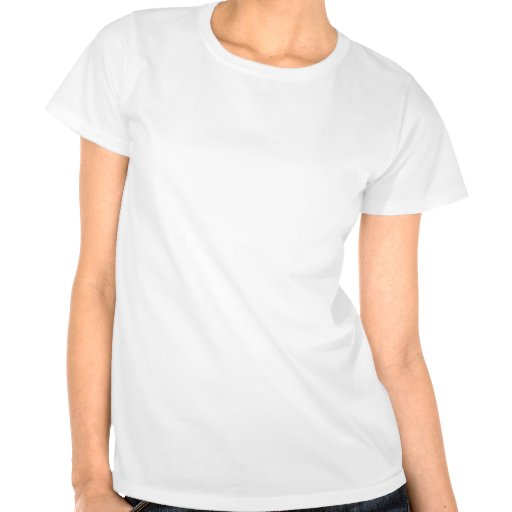source(google.com.pk)
Auntie T Shirts Details/Biography
T SHIRT
T-shirt also tee shirt (tshûrt)
n.
1. A short-sleeved, collarless undershirt.
2. An outer shirt of a design similar to the T-shirt.
A T-shirt (T shirt or tee) is a style of shirt. A T-shirt's defining characteristic is the T shape made with the body and sleeves. It is normally associated with short sleeves, a round neck line, and no collar. However, it may also include long sleeves, buttons, collars, or v-necks.
T-shirts are typically made of cotton fibers (sometimes others), knitted together in a jersey stitch that gives a T-shirt its distinctive soft texture. The majority of modern T-shirts have a body that is made from a continuously woven tube, so the torso has no side seams. This is accomplished with special weaving machines called circular looms, which produce seamless fabric for tube tops, stockings, and the like. Conventional stitching is used for the waist band, neck band, sleeves and to close the shoulders. The manufacture of T-shirts has become highly automated, and may include fabric cutting by laser or water jet.
T-shirt fashions include many styles for both men and women, and for all age groups, including baby, youth, teen, adult and elderly sizes.
The T-shirt evolved from undergarments used in the 19th century, through cutting the one-piece "union suit" underwear into separate top and bottom garments, with the top long enough to tuck under the waistband of the bottoms. T-shirts, with and without buttons, were adopted by miners and stevedores during the late 19th century as a convenient covering for hot environments.
T-shirts, as a slip-on garment without buttons, originally became popular in the United States when they were issued by the U.S. Navy during or following the Spanish American War. These were a crew-necked, short-sleeved, white cotton undershirt to be worn under a uniform. It became common for sailors and Marines in work parties, the early submarines, and tropical climates to remove their uniform "jacket", wearing (and soiling) only the undershirt.
Named the T-shirt due to the shape of the garment's outline, it soon became popular as a bottom layer of clothing for workers in various industries, including agriculture. The T-shirt was easily fitted, easily cleaned, and inexpensive, and for this reason it became the shirt of choice for young boys. Boys' shirts were made in various colors and patterns. By the Great Depression, the T-shirt was often the default garment to be worn when doing farm or ranch chores, as well as other times when modesty called for a torso covering but conditions called for lightweight fabrics.
• AUNTY (noun)
The noun AUNTY has 1 sense:
1. the sister of your father or mother; the wife of your uncle
Familiarity information: AUNTY used as a noun is very rare.
Meaning:
The sister of your father or mother; the wife of your uncle
Classified under:
Nouns denoting people
Synonyms:
aunt; auntie; aunty
Hypernyms ("aunty" is a kind of...):
kinswoman (a female relative)
Hyponyms (each of the following is a kind of "aunty"):
grandaunt; great-aunt (an aunt of your father or mother)
maiden aunt (an unmarried aunt)
Auntie T Shirts Details/Biography
T SHIRT
T-shirt also tee shirt (tshûrt)
n.
1. A short-sleeved, collarless undershirt.
2. An outer shirt of a design similar to the T-shirt.
A T-shirt (T shirt or tee) is a style of shirt. A T-shirt's defining characteristic is the T shape made with the body and sleeves. It is normally associated with short sleeves, a round neck line, and no collar. However, it may also include long sleeves, buttons, collars, or v-necks.
T-shirts are typically made of cotton fibers (sometimes others), knitted together in a jersey stitch that gives a T-shirt its distinctive soft texture. The majority of modern T-shirts have a body that is made from a continuously woven tube, so the torso has no side seams. This is accomplished with special weaving machines called circular looms, which produce seamless fabric for tube tops, stockings, and the like. Conventional stitching is used for the waist band, neck band, sleeves and to close the shoulders. The manufacture of T-shirts has become highly automated, and may include fabric cutting by laser or water jet.
T-shirt fashions include many styles for both men and women, and for all age groups, including baby, youth, teen, adult and elderly sizes.
The T-shirt evolved from undergarments used in the 19th century, through cutting the one-piece "union suit" underwear into separate top and bottom garments, with the top long enough to tuck under the waistband of the bottoms. T-shirts, with and without buttons, were adopted by miners and stevedores during the late 19th century as a convenient covering for hot environments.
T-shirts, as a slip-on garment without buttons, originally became popular in the United States when they were issued by the U.S. Navy during or following the Spanish American War. These were a crew-necked, short-sleeved, white cotton undershirt to be worn under a uniform. It became common for sailors and Marines in work parties, the early submarines, and tropical climates to remove their uniform "jacket", wearing (and soiling) only the undershirt.
Named the T-shirt due to the shape of the garment's outline, it soon became popular as a bottom layer of clothing for workers in various industries, including agriculture. The T-shirt was easily fitted, easily cleaned, and inexpensive, and for this reason it became the shirt of choice for young boys. Boys' shirts were made in various colors and patterns. By the Great Depression, the T-shirt was often the default garment to be worn when doing farm or ranch chores, as well as other times when modesty called for a torso covering but conditions called for lightweight fabrics.
• AUNTY (noun)
The noun AUNTY has 1 sense:
1. the sister of your father or mother; the wife of your uncle
Familiarity information: AUNTY used as a noun is very rare.
Meaning:
The sister of your father or mother; the wife of your uncle
Classified under:
Nouns denoting people
Synonyms:
aunt; auntie; aunty
Hypernyms ("aunty" is a kind of...):
kinswoman (a female relative)
Hyponyms (each of the following is a kind of "aunty"):
grandaunt; great-aunt (an aunt of your father or mother)
maiden aunt (an unmarried aunt)
Auntie T Shirt
Auntie T Shirt
Auntie T Shirt
Auntie T Shirt
Auntie T Shirt
Auntie T Shirt
Auntie T Shirt
Auntie T Shirt
Auntie T Shirt














very nice post.................
ReplyDeleteIndian College Students Fucking in public park
indian young beautiful wife fucking with husband's office mate scandal
cute little girls sexy uncommon collection
bangla desi Cute bhabi show her boobs and pussy
busty big boob girls sexy uncommon collection
hot Indian teen girls and aunty sexy uncommon collection
Desi Cute Girlfriend Fucked In Car
Pakistani Girlfriend Mahbuba Forced Raped In Jungle By Her Boyfriends And Many Friends
bangladeshi college girl roshnie jessore sex scandal getting her boobs sucked
Hot Indian Bhabhi hard sex With Her Boyfriend
sex love fuck whore teen pussy sucking fucking ass boobs
Desi Tamil Wife Gave Her Husband a good Blowjob
Bangladeshi smart girls photo collection
sexy hot girls Stolen facebook photos
Busty Arab girls photo collection
Bikini girls photo collection
Indian aunty and vabi sexy picture collection
pakistani school girls hot photo collection
bad partygirls secret stolen photo collection
bad lesbian teens photo album
………… /´¯/) click for supper sexy girls
……….,/¯../ /
………/…./ /
…./´¯/’…’/´¯¯.`•¸
/’/…/…./…..:^.¨¯\
(‘(…´…´…. ¯_/’…’/
\……………..’…../
..\’…\………. _.•´
…\…………..(
….\…………..\.